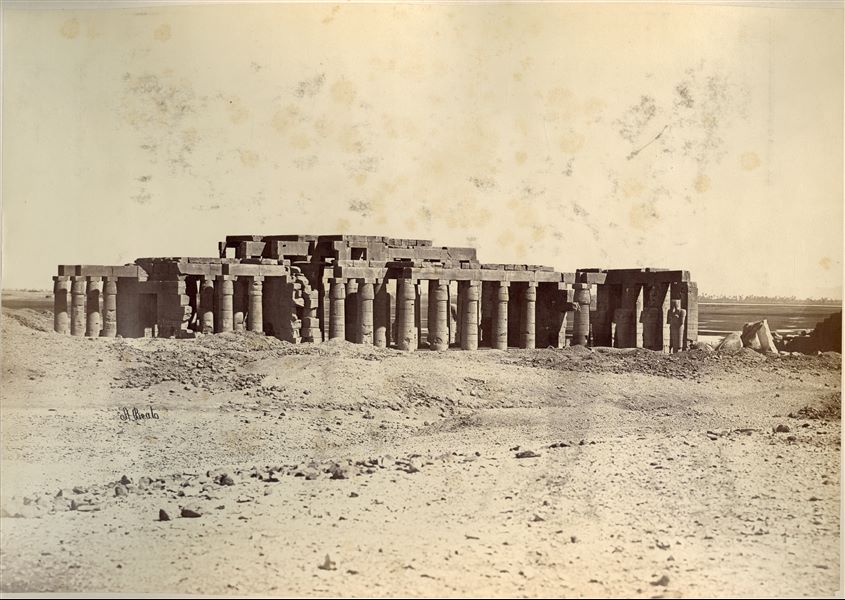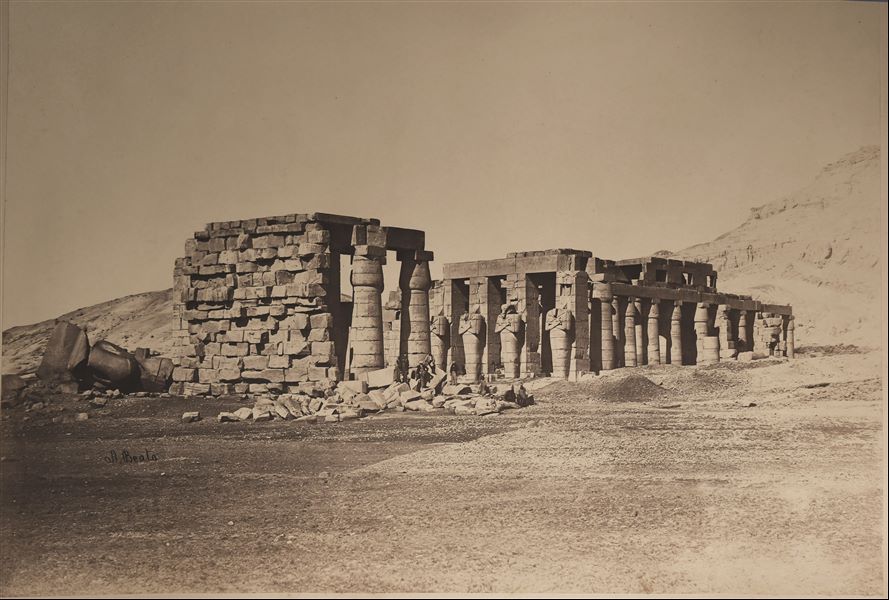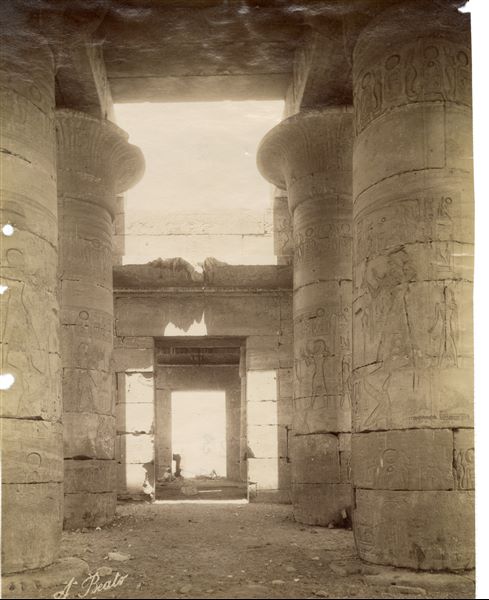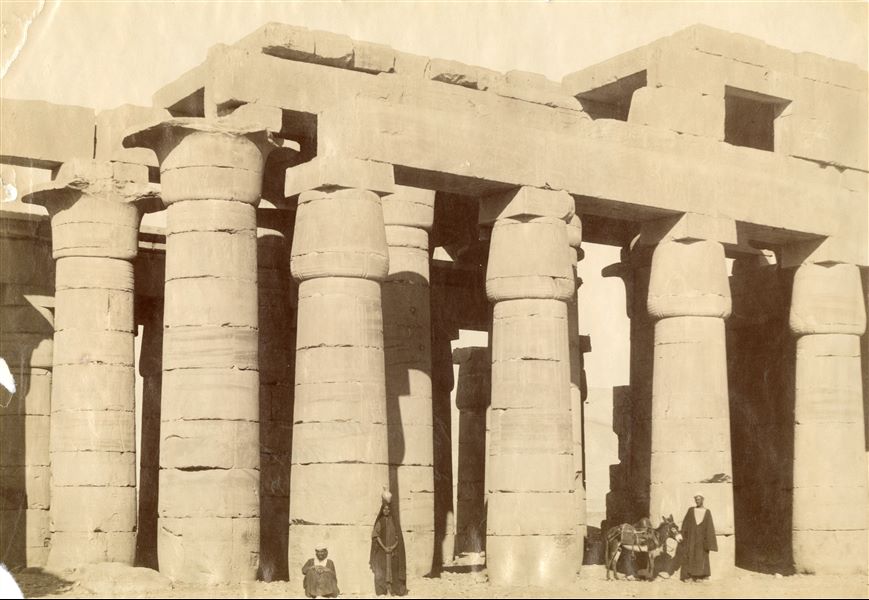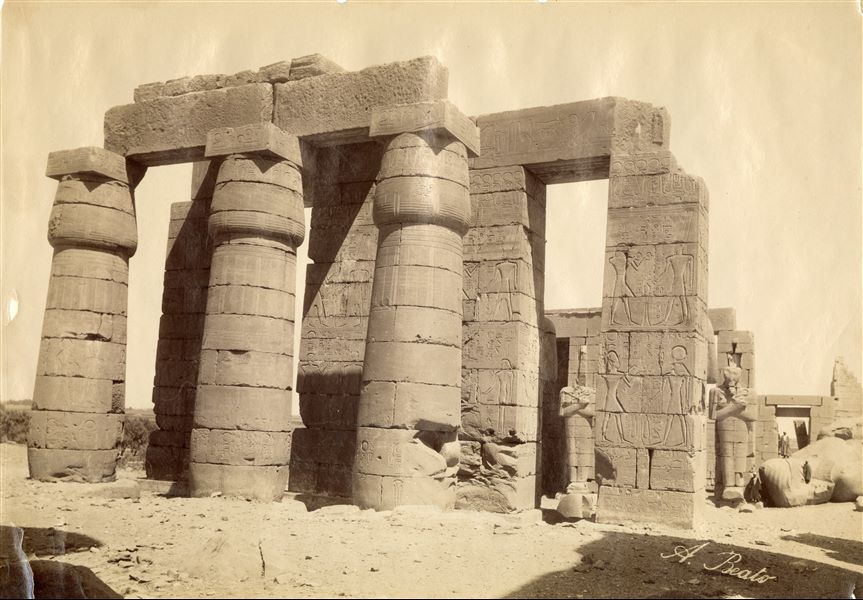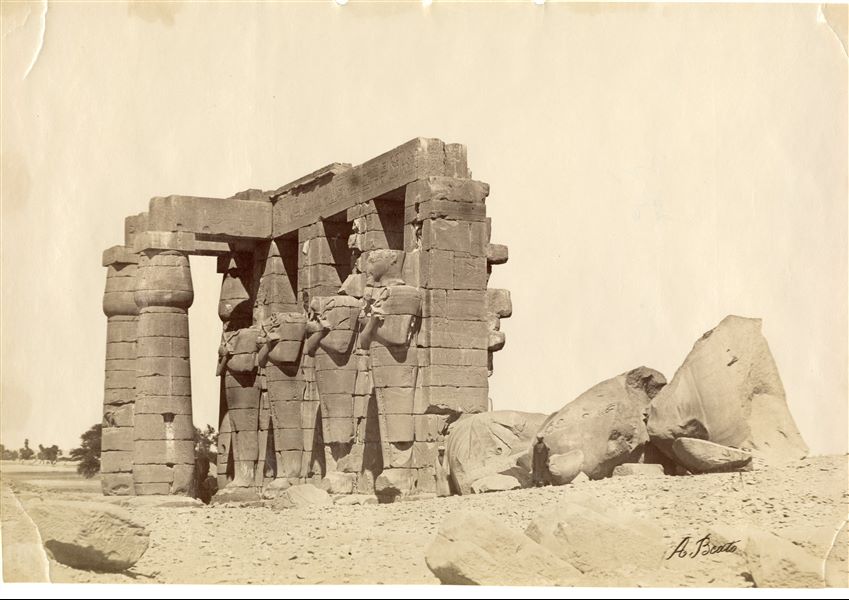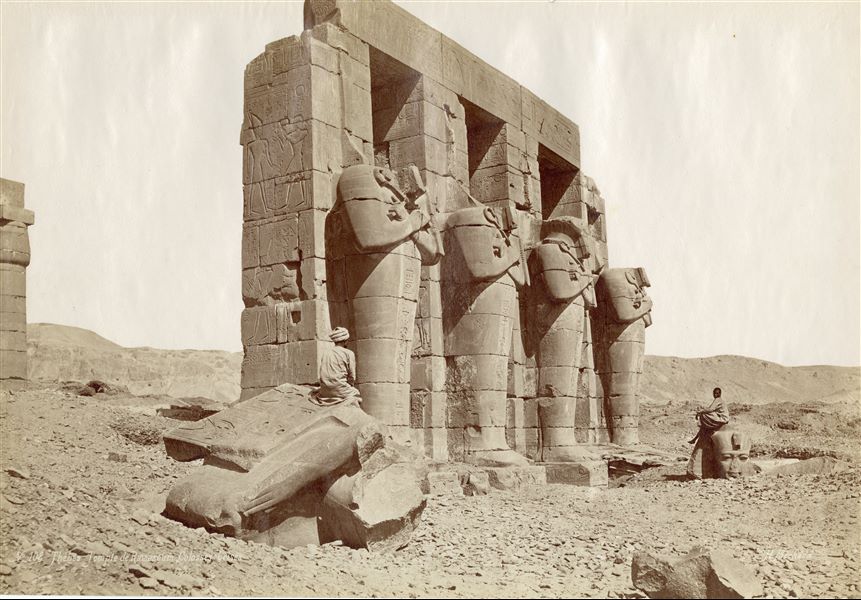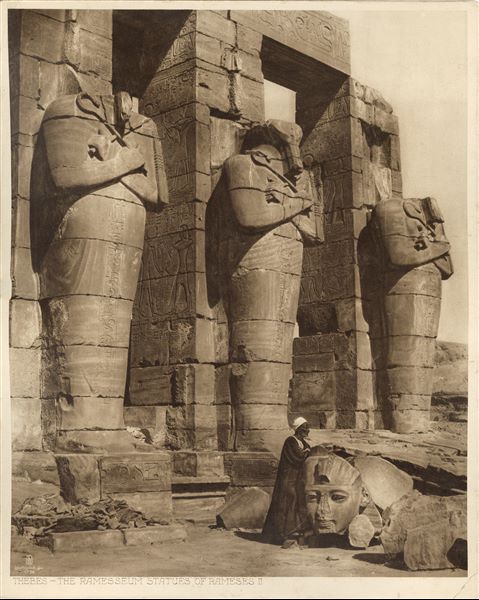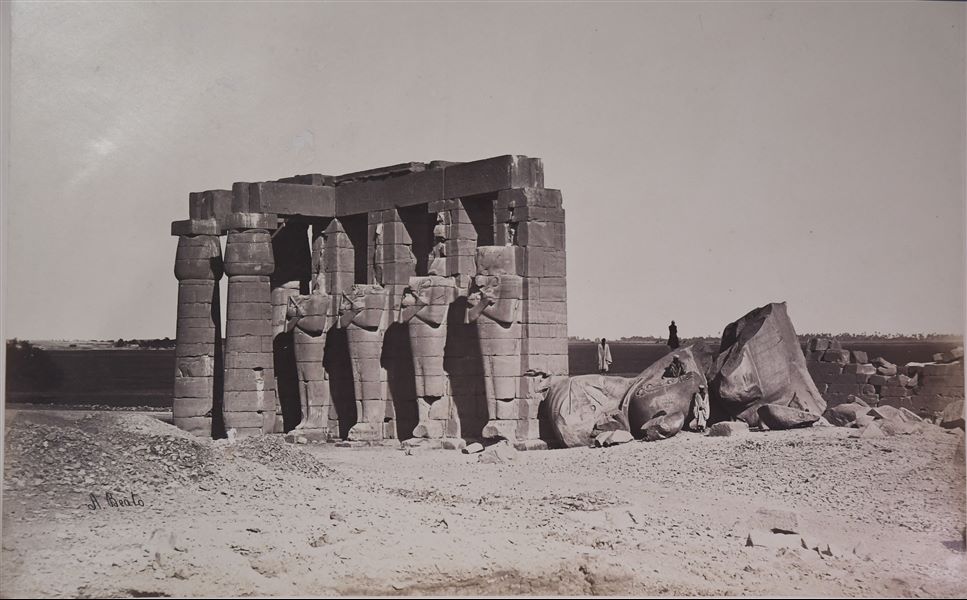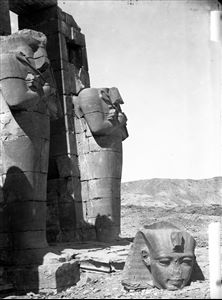General view of the Ramesseum, West Thebes, built by Pharaoh Ramesses II. The Nile is visible in the background. The author's signature is on the left, towards the bottom.
General view of the Ramesseum, West Thebes, built by Pharaoh Ramesses II. The Theban Mountain is visible in the background. The author's signature can be found at the bottom left.
View of the remains of the Ramesseum, the Funerary Temple built by Pharaoh Ramesses II on the west bank of the Nile near ancient Thebes. Four Osiride pillars representing the pharaoh himself can be seen. The author's signature is visible at the bottom right.
The photograph shows the central corridor of the Hypostyle Hall in the Ramesseum, the Funerary Temple of Pharaoh Ramesses II built on the west bank of the Nile at Thebes. The four end columns and the door on the western wall of the hall can be seen, near which two local inhabitants stand. The author's signature is visible at the bottom.
Photograph of the Hypostyle Hall in the Ramesseum, the Funerary Temple of Ramesses II in West Thebes. On the back wall, a scene with Ptah, Amun and Ramesses II is visible (to the right, hidden by the column, is also the figure of the goddess Tefnut). The photograph can be attributed to Antonio Beato.
The photogrpah shows the north side of the colonnade from the Hypostyle Hall in the Ramesseum, while two men, a woman and a donkey look towards the camera lens. The bases of the columns are still under the sand. The photograph can be attributed to Antonio Beato.
The photograph shows a detail from the interior wall decoration in the Ramesseum, where Pharaoh Ramesses II, (on the left) receives the emblems of power from the god Amun who is seated in the centre. Next to Amun is the goddess Mut. The author's signature, written with very small lettering is visible at the bottom right.
The photograph shows a detail from the interior wall decoration in the Ramesseum, where Pharaoh Ramesses II (on the left) receives the emblems of power from the god Amun seated in the centre. Next to Amun is the goddess Mut. The lower part of the photograph is blurred.
View of some columns from the Ramesseum in West Thebes, built by Pharaoh Ramesses II. In the background, two of the collossal Osiride pillars of Ramesses II are visible, which are still standing, and other statues of even more monumental dimensions are lying on the ground. The author's signature is clearly visible at the bottom right.
The photograph shows part of the second courtyard of the Ramesseum, where the monumental Osiride pillars of Pharaoh Ramesses II stand.
The photograph shows part of the second courtyard of the Ramesseum, where the monumental Osiride pillars of Pharaoh Ramesses II stand. The author's signature is visible at the bottom right.
The image depicts four Osiride pillars of Pharaoh Ramesses II in the Ramesseum, West Thebes, built by the same pharaoh. The author's signature is visible at the bottom right.
The photograph shows four Osiride pillars of Ramesses II in his Funerary Temple (the Ramesseum) in West Thebes. Two Egyptians pose seated on the colossal fragments of some Ramesside statues. The author has placed his signature at the bottom right.
The photograph shows three Osiride pillars of Ramesses II in his Funerary Temple (the Ramesseum) in West Thebes. An Egyptian poses leaning against a fragmentary head of a fallen colossal statue.
Detail of a section from the Ramesseum, the Funerary Temple of Ramesses II, where four Osiride pillars can be seen, almost all of them missing their heads. On one of the statue fragments lying on the ground, there is a graffito with the date 1870, which allows the photograph to be dated to a later period. The author's signature is visible at the bottom left.
